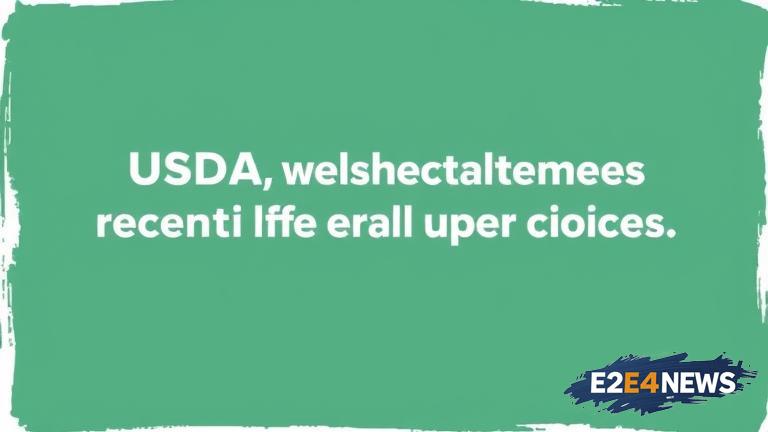The Trump administration has given the green light to Oklahoma’s proposal to restrict the types of foods that can be purchased using the Supplemental Nutrition Assistance Program (SNAP). This decision has been met with both support and criticism, as some argue that it will help promote healthier eating habits among low-income individuals, while others claim that it will limit access to food for those who need it most. The proposal, which was submitted by the Oklahoma Department of Human Services, aims to remove certain foods from the SNAP program, including sugary drinks, candy, and baked goods. Proponents of the plan argue that it will help reduce the state’s high rates of obesity and related health problems. However, opponents argue that the restrictions will disproportionately affect vulnerable populations, such as the elderly, disabled, and those living in food deserts. They also claim that the plan will create unnecessary barriers to accessing food, particularly for those who rely on SNAP as their primary means of obtaining nutrition. The USDA’s approval of the proposal has sparked a national debate over the role of government in regulating food choices and the impact of such restrictions on low-income communities. Some argue that the government should not be dictating what foods people can and cannot buy, while others believe that it is necessary to promote public health. The Oklahoma Department of Human Services has stated that the restrictions will not apply to all SNAP recipients, but rather to those who are deemed ‘able-bodied’ and without dependents. However, critics argue that this distinction is arbitrary and will still have a negative impact on many individuals who rely on SNAP. The proposal has also raised concerns about the potential impact on local businesses, particularly small grocery stores and convenience stores that rely on SNAP sales. Some argue that the restrictions will lead to a decline in sales and potentially even store closures, which could exacerbate food insecurity in already vulnerable communities. On the other hand, proponents of the plan argue that it will encourage recipients to make healthier choices and support local farmers and producers who offer fresh, nutritious foods. The USDA’s approval of the proposal has also sparked concerns about the potential for other states to follow suit, which could lead to a patchwork of different rules and regulations governing SNAP across the country. As the debate continues, it remains to be seen how the restrictions will be implemented and what impact they will have on Oklahoma’s low-income communities. The proposal has been praised by some health advocates, who argue that it is a necessary step to address the state’s high rates of obesity and related health problems. However, others argue that it is a misguided attempt to address the root causes of poverty and food insecurity. The Oklahoma Department of Human Services has stated that it will work with local stakeholders to implement the restrictions and ensure that recipients have access to healthy, nutritious foods. However, critics argue that the plan will require significant investments in education and outreach to inform recipients about the changes and help them navigate the new rules. The proposal has also raised questions about the potential impact on food banks and other emergency food providers, which may see an increase in demand as a result of the restrictions. As the situation continues to unfold, it is clear that the debate over SNAP and food accessibility will remain a contentious issue in the months and years to come. The Trump administration’s approval of the proposal has been seen as a significant victory for proponents of the plan, but opponents vow to continue fighting against the restrictions. The proposal has sparked a national conversation about the role of government in regulating food choices and the impact of such restrictions on low-income communities. As the country watches Oklahoma’s experiment with SNAP restrictions, it remains to be seen what lessons will be learned and how they will inform future policy decisions.





